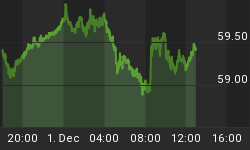It is important that confidence be restored for the recent stock market gains to be more enduring. A few comments regarding this issue are highlighted in this post.
As shown in Sunday's "Words from the Wise" review, there is a strong historical relationship between the US Consumer Confidence Index and the 12-month change in the S&P 500 Index. One needs to take a view on the direction of consumer confidence, but should it for argument's sake pick up from 30 to 40 by the end of June, the relationship indicates a S&P 500 decline of 30-35% in year-ago terms. Using end-of-quarter prices, this means an Index at between 832 and 896 by mid-year.

Source: Plexus Asset Management (based on data from I-Net Bridge)
Interestingly, a report from Franklin Templeton Investments has just arrived, also showing that when confidence was low in the past, it had been time to buy. For example, on average, stocks returned 12.5% a year following consumer confidence of 66 or lower. The consumer confidence reading at the end of February was 25.

Another confidence indicator worth monitoring, is the Barron's Confidence Index. This Index is calculated by dividing the average yield on high-grade bonds by the average yield on intermediate-grade bonds. The discrepancy between the yields is indicative of investor confidence. There has been an improvement in the ratio since its all-time low in December, showing that bond investors are growing somewhat more confident and have started opting for more speculative bonds over high-grade bonds.

Source: I-Net Bridge
Not surprisingly, a strong historical relationship also exists between the Barron's Confidence Index and the S&P 500's 12-month rate of change. But unlike consumer confidence that has not yet bottomed, the Barron's indicator has already been working its way higher over the three months.

Source: Plexus Asset Management (based on data from I-Net Bridge)
As mentioned before, taking one step at a time, the next hurdle is the release of potentially ugly earnings and guidance announcements in April. By then a clearer picture should also start emerging on the results of the Fed's medicine and whether credit markets are thawing and confidence is beginning to improve.
Did you enjoy this post? If so, click here to subscribe to updates to Investment Postcards from Cape Town by e-mail.
















